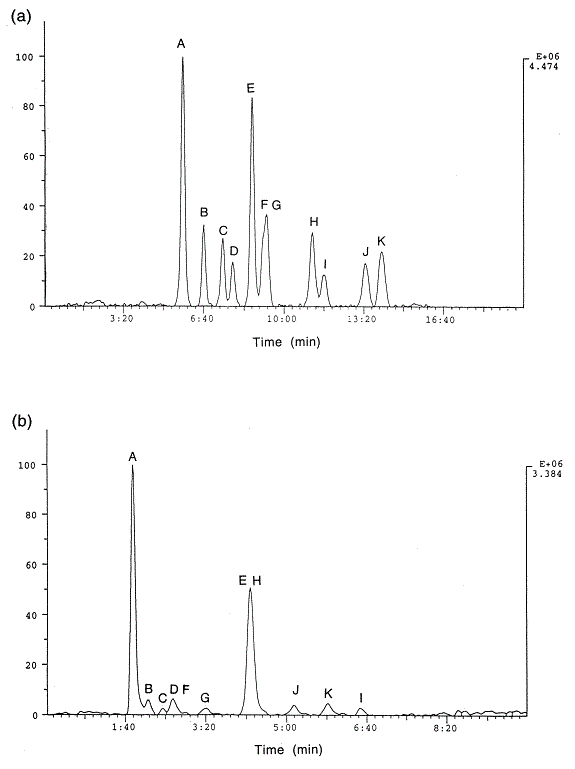Determination of steroids by liquid chromatography/mass spectrometry |
| |
| Authors: | Yee-Chung Ma Hee-Yong Kim |
| |
| Affiliation: | 1. Section of Mass Spectrometry, LMBB, NIAAA, NIH, 12501 Washington Ave., Rockville, Maryland, USA
|
| |
| Abstract: | 
On-line atmospheric pressure chemical ionization (APCI) and electrospray ionization (ESI) liquid chromatography/mass spectrometry (LC/MS) were evaluated for the analysis of a variety of steroids. Steroids were classified into three major groups based on the spectra and the sensitivities observed: (I) those containing a 3-one, 4-ene functional group, (II) those containing at least one ketone group without conjugation, and (III) those containing hydroxy group(s) only. In the APCI mode, the best sensitivity and the lowest detection limit for all three groups were obtained by using a mobile phase consisting of methanol and 1%–2% acetic acid in water. The APCI spectra were characterized by MH+, MH+-H2O, MH+-2H2O, etc., with the degree of H2O loss being compound dependent: group I steroids produced stable MH+ and group III steroids showed extensive water loss. In the electrospray mode the best sensitivity and the lowest detection limit for the first two groups were obtained when pure methanol and water were used as the mobile phase. This condition produced abundant stable MNa+ due to ubiquitous sodium. Detection limits in the 5–15 pg range can be easily achieved using ESI LC/MS. Addition of ammonium acetate or use of acetonitrile in the mobile phase, common in the LC/MS analysis of steroids, decreased the sensitivity for the group I and II steroids and thus should be avoided. For group III steroids, the detection limit can be improved by the addition of acetic acid to the mobile phase. |
| |
| Keywords: | |
| 本文献已被 ScienceDirect SpringerLink 等数据库收录! |
|

